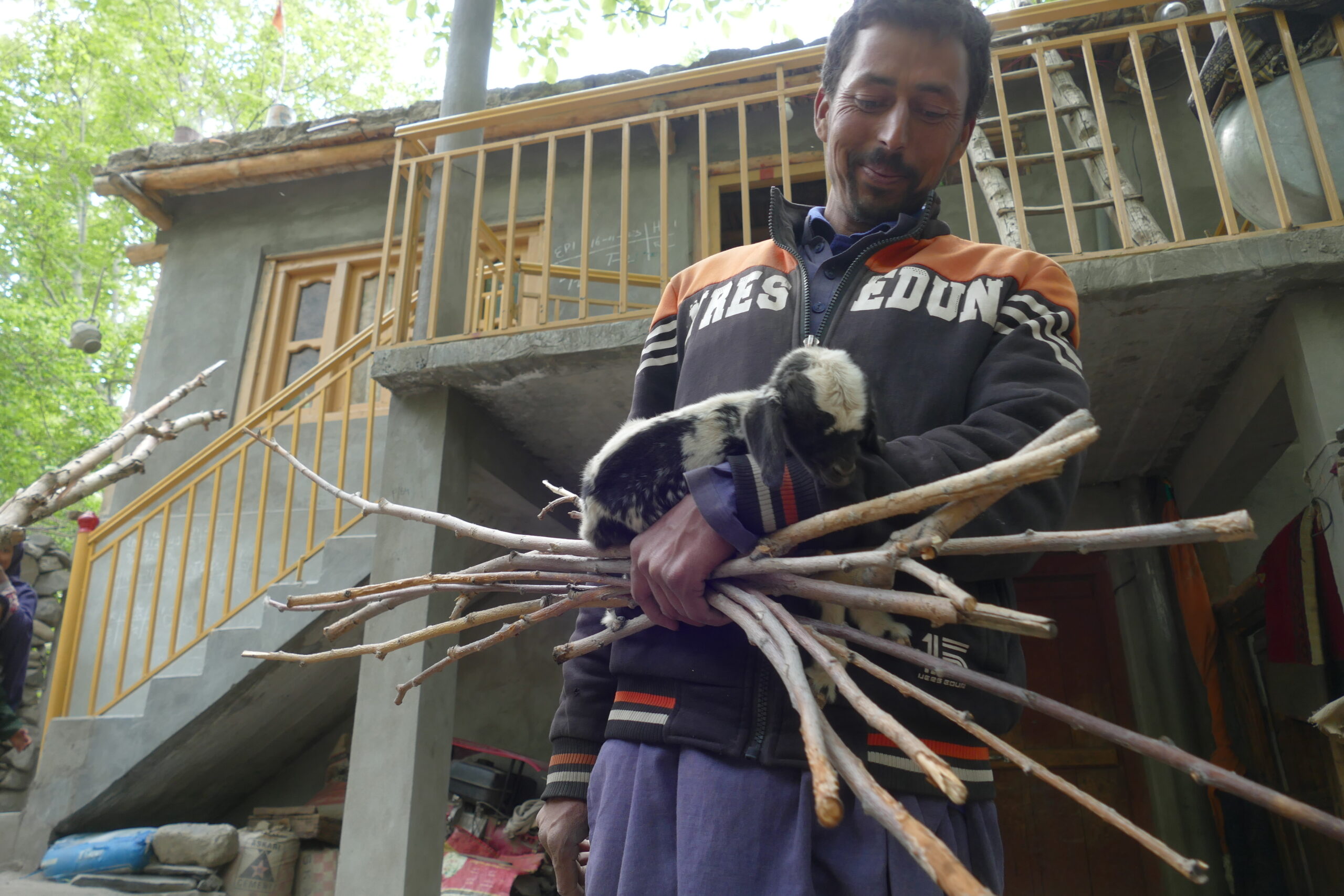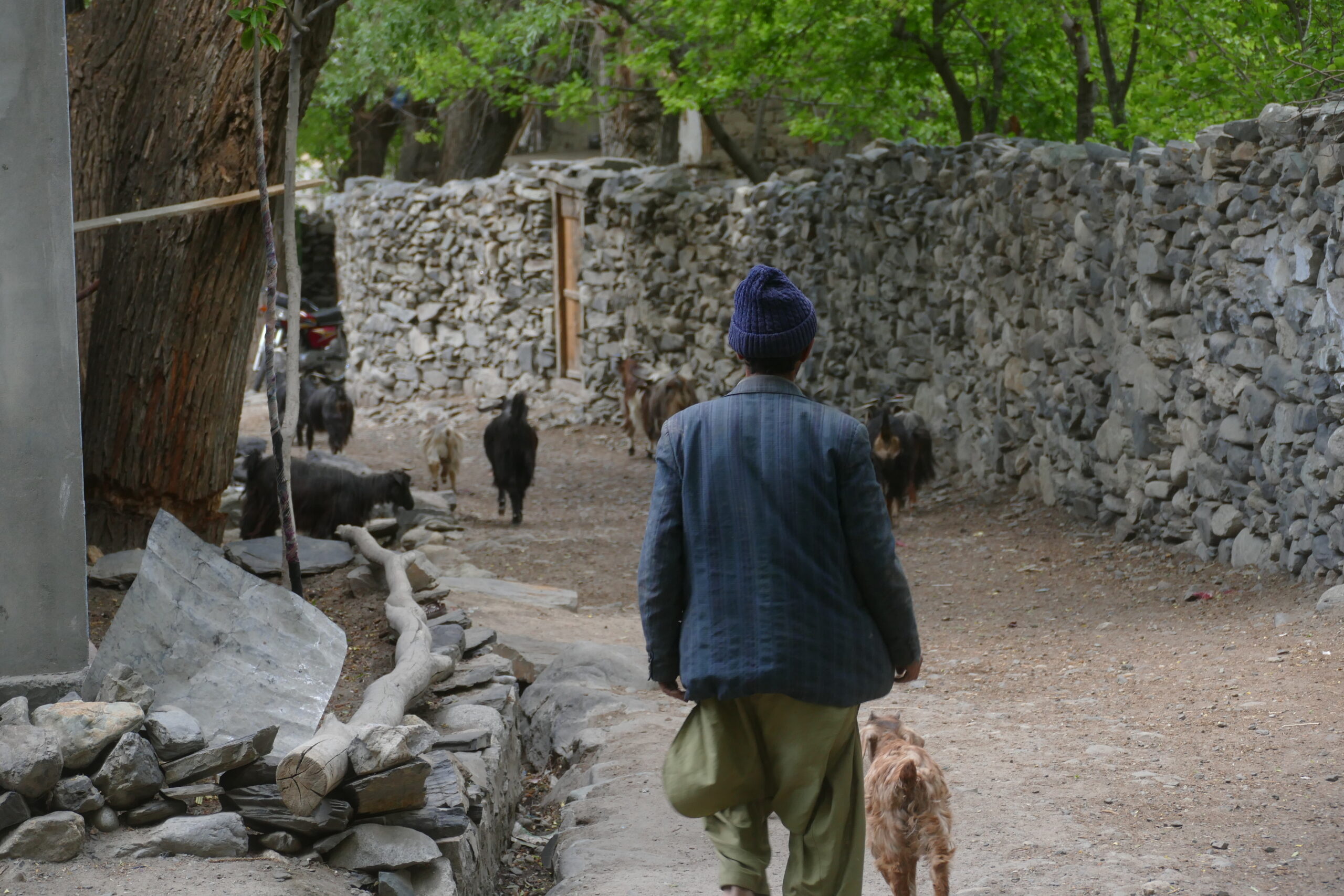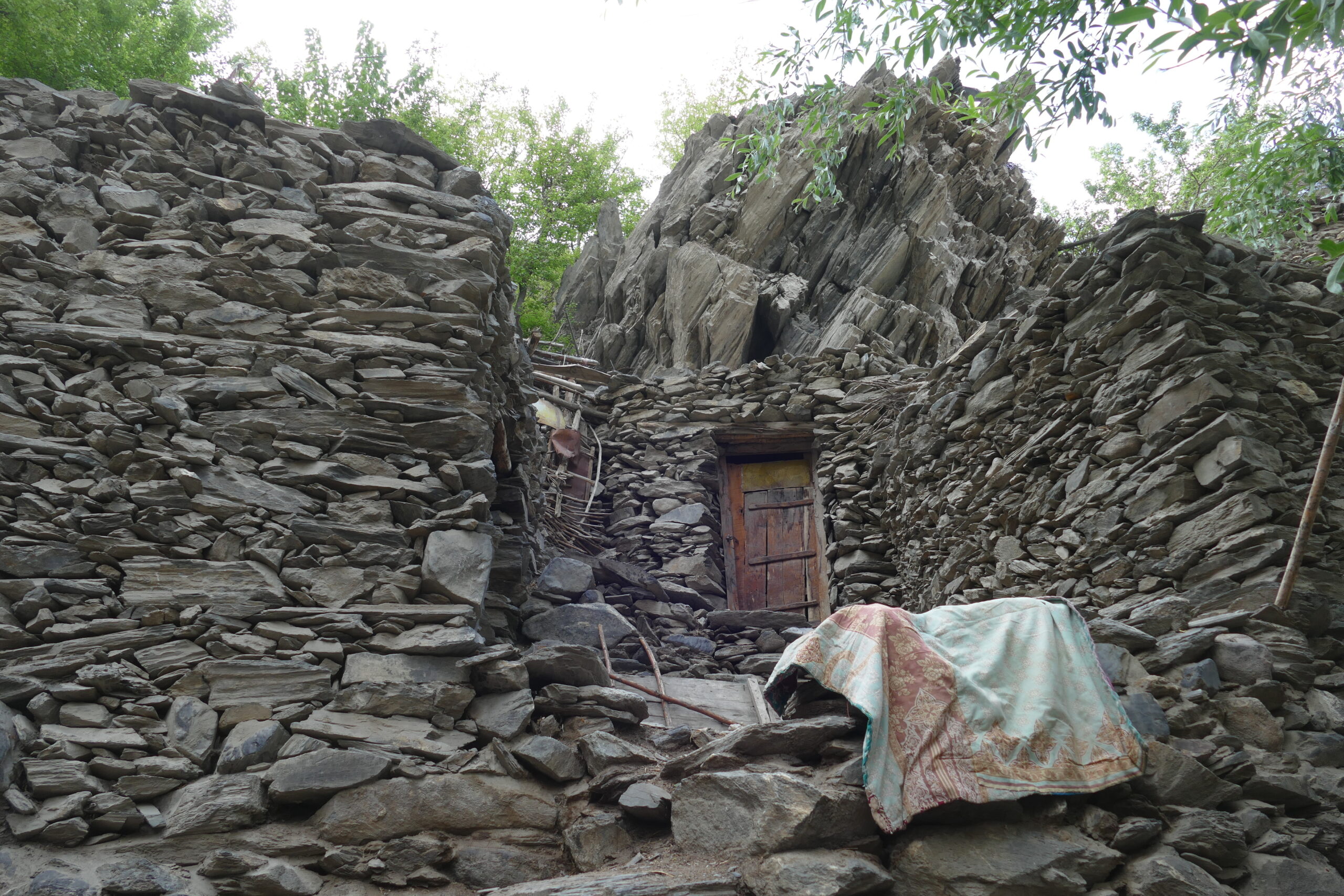Snow leopards are often called the “ghosts of the mountains”. As of the most enigmatic big cats in the world, their mastery of moving invisibly in the harsh mountains is well-known, and few people have seen them with their own eyes. On the steep slopes of the Himalayas, they are the only predator capable of catching agile mountain ungulates like the Markhor. These thoughts go through my head, as we follow Raza Mohammad, program officer of the Baltistan Wildlife Conservation and Development Organisation (BWCDO) on a narrow path leading into snow leopard habitat close to the village of Skyo in the Pakistani Himalayas. We are accompanied by two local wildlife guards, both named Mushtaq, who know this place like the palm of their hands. They not only monitor wild herbivores, such as Himalayan ibex and the famous Astore Markhor – Pakistan’s national animal – but also have a crucial role in protecting the snow leopard population.
As elusive as this big cat is, for the agro-pastoralist population of the Gilgit-Baltistan region, snow leopards are a real threat. Even a single attack of a snow leopard on their livestock can have devastating effects for the livelihood of local farmers, and over time, retaliatory or preventive killings became common despite the snow leopard being a protected species and its hunting is forbidden in Pakistan by law. Right now, we are in the best place to learn about the intricate relationship between local communities and this majestic cat. And, in the best hands of BWCDO, global pioneers of developing a livestock insurance scheme connected to snow leopards, compensating farmers for livestock losses resulting from snow leopard attacks.
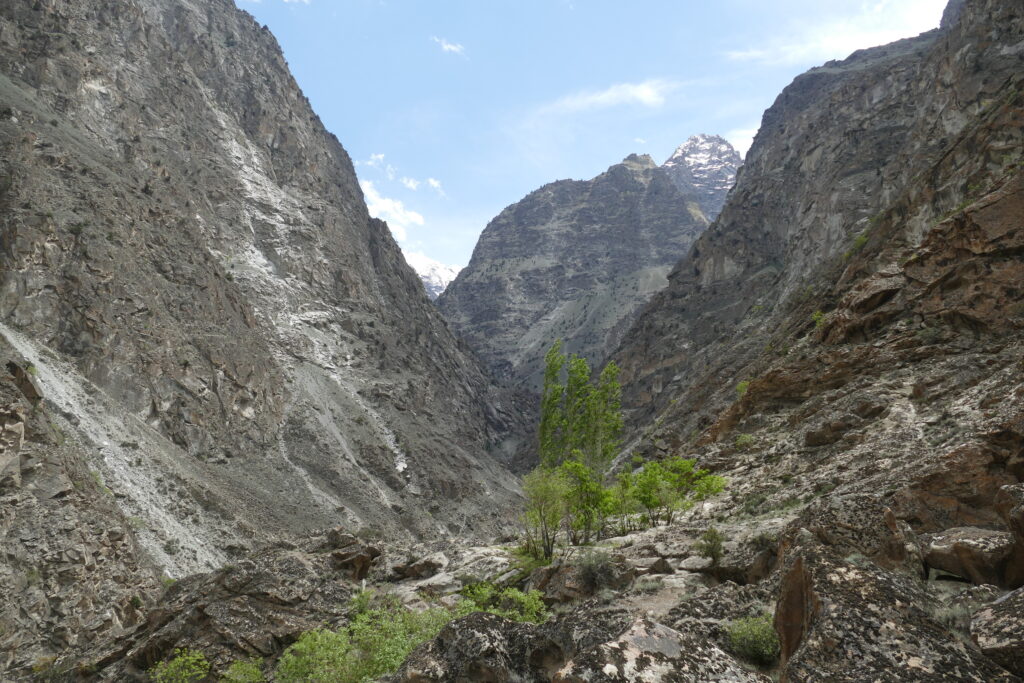
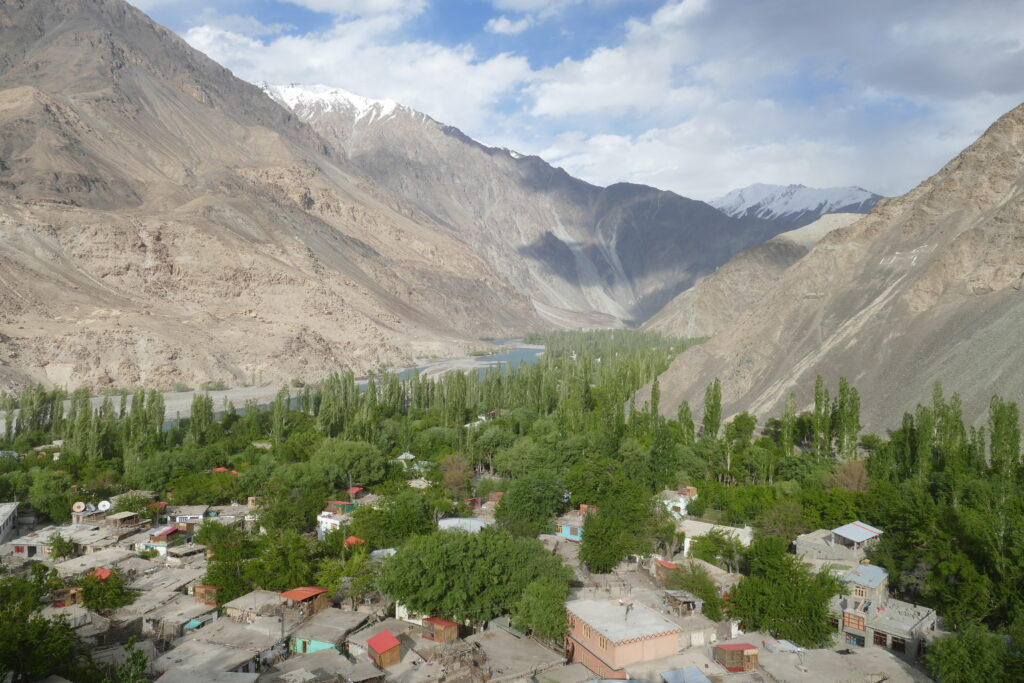
The Gilgit-Baltistan region of Pakistan is home of the world’s highest mountain ranges.
Humans and snow leopards go way back
The Gilgit-Baltistan region in northern Pakistan marks the point where the Hindu Kush, Karakoram and the Himalayas, three of the world’s highest mountain ranges, collide. Of around 8000 snow leopards worldwide, an estimated number of 400 snow leopards are present in the northern areas of Pakistan, including Gilgit-Baltistan.
Here, people have been living with these majestic animals for a long time, and as a pastoralist community, they have experienced the possibly devastating effects of snow leopard predation on their livestock. Even today, local farmers have a meagre annual income of around $500 on average. Even in a one-time attack, a snow leopard that gets into a barn or coral can kill up to 80 animals, threatening the entire family’s livelihood. Therefore, farmers have a strong incentive to kill snow leopards. By killing them, they ensure their livelihoods and the well-being of their families. Attacks on domestic livestock mostly occur in winter, when leopards come down to the villages and break into corals, as well as in June on the high pastures, as snow leopard mothers need to feed their cubs.
Herder and livestock returns to the village of Ghasing in the Upper Indus valley.
Therefore, up until 24 years ago, farmers saw protecting snow leopards as a direct threat to their livelihoods. This has generated conflict between farmers and conservationists. Farmers have been seeing the snow leopard as a direct threat to their livelihoods that should be eliminated, while conservationists viewed it as a charismatic animal that must be protected. So, what could be done to bridge the gap between the two sides of the coin?
A pilot idea
This is the foundation upon which the organisation BWCDO was established. Founded by Dr. Shafqat Hussain in 1999 under the name ‘Project Snow Leopard’ which later became the ‘Baltistan Wildlife Conservation Organisation’, the aim was to work with local village communities and introduce a livestock insurance scheme to compensate them for their livestock losses. Moreover, through awareness raising, conservation education and other forms of support, the team set out to end the retaliatory killings against the snow leopard.
The task is not easy. As Muhammad Zaman, general manager of BWCDO explains, the most difficult task is changing the attitude of people, which is extremely time-consuming. It is not enough to go and hold a presentation in each village. The team of BWCDO has to maintain a close relationship with locals, regularly visit them and listen to their needs and ideas. The success of their work depends on treating locals as equals in snow leopard conservation, and making them understand that they themselves have a large stake in protecting this species. And they have succeeded. Until 2005 the project was gradually expanded from a pilot project to five villages, and currently 20 villages are involved in the livestock insurance scheme.
Deep into the Himalayan mountains, BWCDO captured a family of 4 snow leopards; one a mother and other three its cubs. (Video by BWCDO)
The first livestock insurance scheme for snow leopards
The insurance scheme operates as follows. All households in the participating village take out an insurance policy on their livestock. Their annual premium rate is 1% of the current market value of their livestock. This covers about 50% of the costs of annual average livestock losses. The other 50% is covered by BWCDO with the help of external grants requested from international and national donors.
The system is controlled by the so-called “Village Insurance Committee”, the members of which are elected by the community in question. They are the ones who verify all claims. If, after a site visit, the Committee finds that the claim is genuine, they forward the request to BWCDO, which then distributes the compensation in agreement with the Committee.
Apart from the livestock insurance scheme, it is also important to provide alternative measures to farmers. This is where predator-proof corals come into the picture. Up to now, BWCDO constructed about 50 predator-proof corrals to keep the livestock safe during night-time. Through these precautionary measures, the snow leopard population is doing well and farmers are cooperative in the areas where BWCDO is working.


The predator-proof corrals built by BWCDO have a mesh wire top, so that predators cannot jump over the wall and into the corral. (Photos by BWCDO)
Investing in the future generation
Many conservation NGOs or governmental wildlife agencies tend not to focus on the human dimensions of conservation enough. However, especially for human-wildlife conflicts, the only successful way forward is working with the affected people themselves. And not just with the people who are facing these conflicts now, but with the future generation as well. As Raza puts it, the children of the region are the future, and therefore it is very important to invest in their education. Hence, BWCDO has provided access to education to 1700 girls for the first time in the region. They also train teachers to raise awareness about the importance of conservation and snow leopard protection.
The team also established so-called “Snow leopard clubs” in several schools. With the principal as chairman and students as members, the clubs are responsible for organising international day celebrations, community cleaning campaigns and other activities. Jointly, the biggest celebration of the year is the annual Snow Leopard Day on 23rd October, a day full of talks, games, quizzes and other fun activities cherishing the snow leopard.
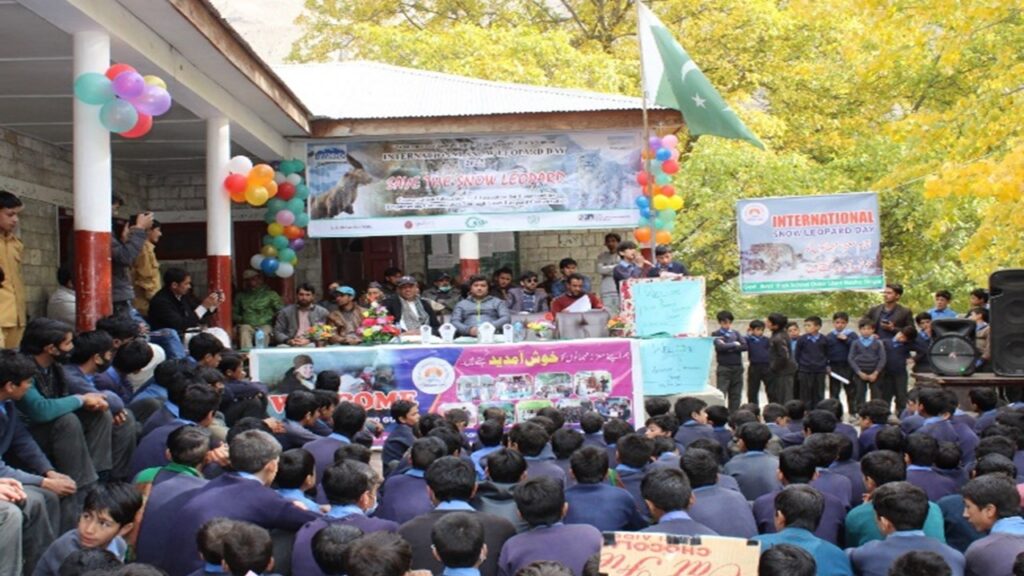
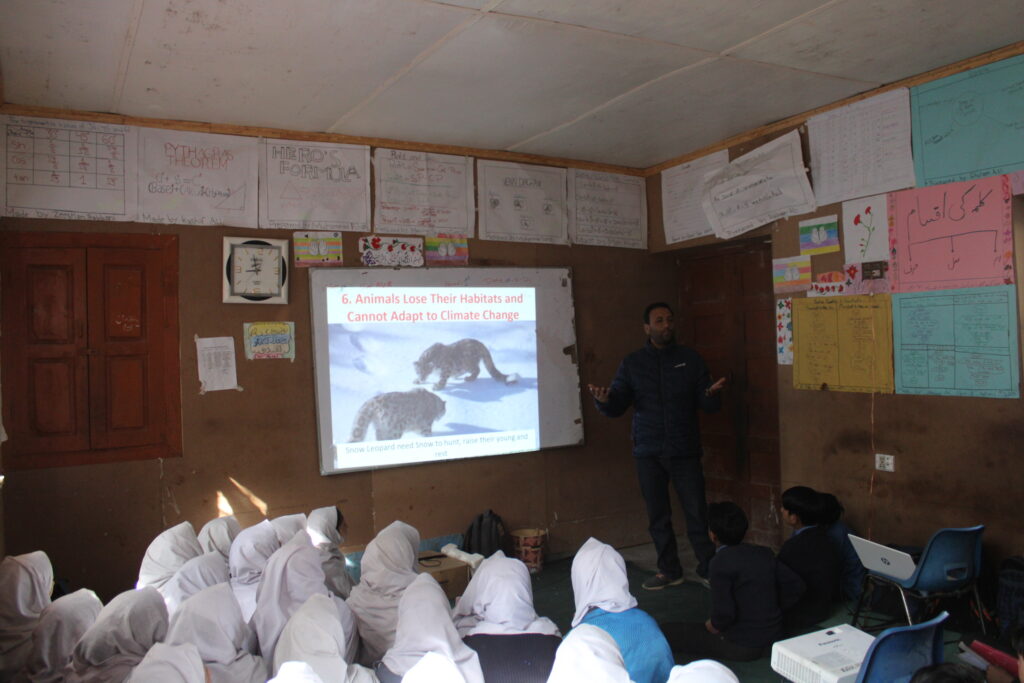
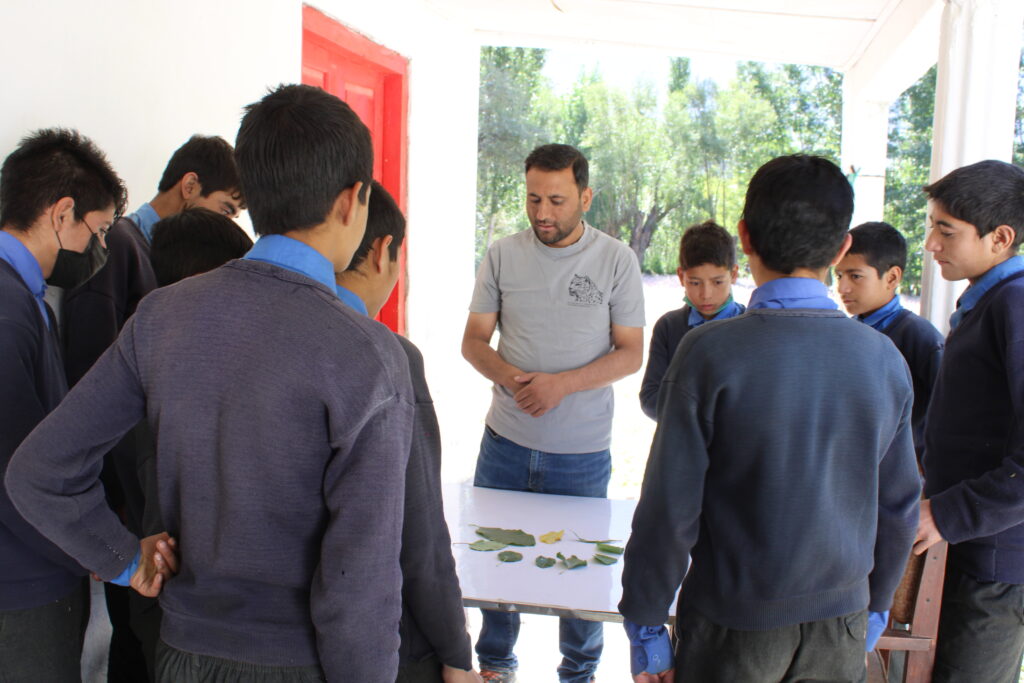
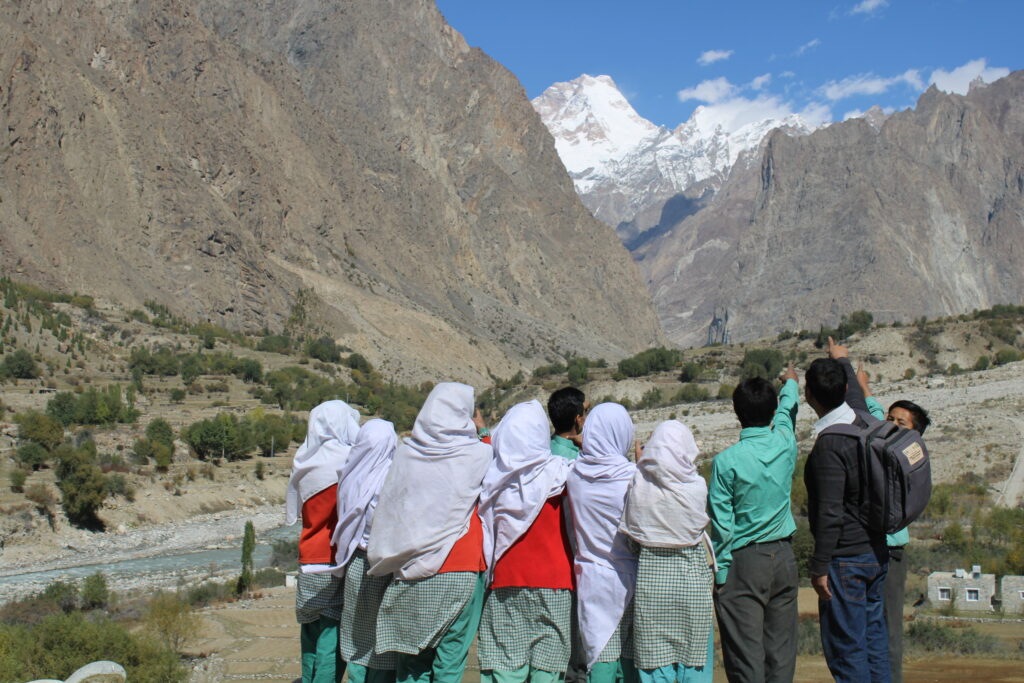
Educating youth inside and outside the classroom. (Photos by BWCDO)
Snow leopard conservation and trophy hunting
In some communities a trophy hunting program for ungulates is in place. Therefore, the stakes are high for locals to sell hunting permits in their community-controlled hunting areas for species such as the markhor. Just this past year the community of Skyo which we are visiting, received 3 crore and 65 lakh (36.5 million PKR or over 120.000 USD) for trophy hunting. Thus, although there is no proof that snow leopards would decrease the population sizes of ungulates to the degree where hunting would be forbidden, locals are still concerned about their valued trophy species. “YOUR snow leopard attacks OUR Markhor,” they launch their complaints to conservation institutions.
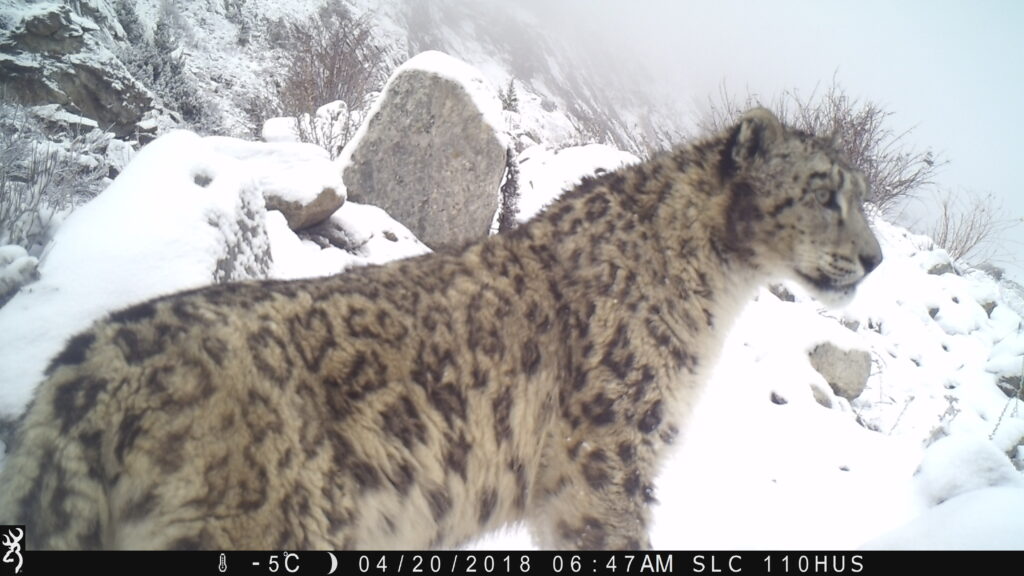
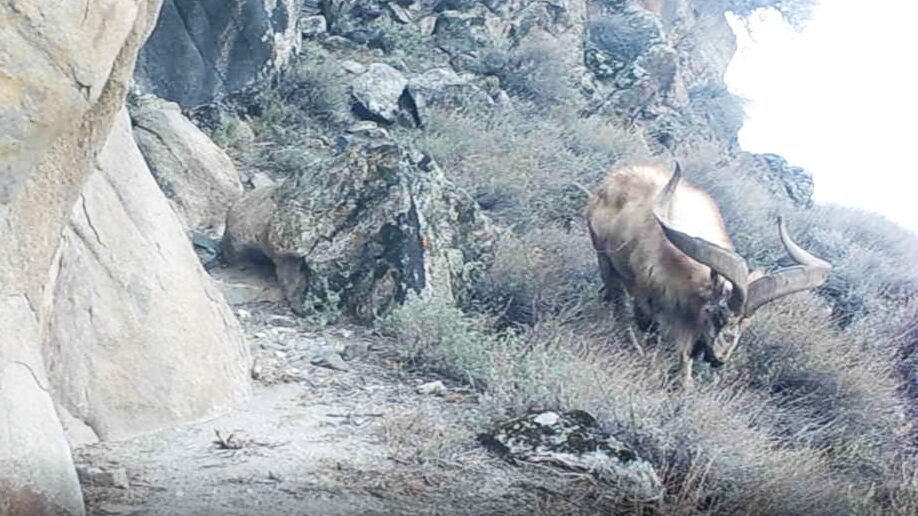

Markhor and snow leopard share the same habitat and even the same paths, proven by BWCDO’s camera traps. (Photos by BWCDO)
The path to success
Measuring the success of protecting the snow leopard is challenging, as monitoring the population trends of such an elusive species is not easy. BWCDO uses camera traps, scat sampling and genetic analysis to scientifically monitor the population. Because this is time- and money-consuming in the high mountains, they involve local wildlife guards in each village. BWCDO gives them the equipment and training, and they monitor camera traps and regularly update the team about snow leopard sightings. The organisation found that within the area of its activities, the snow leopard population is stable with about 25-40 snow. And with a very limited annual budget of only 20.000 USD, we are impressed to witness the huge dedication and impact that this team continues to have in the region.
BWCDO chooses a different path than many other conservation NGOs. “We want to provide a new model for conservation, which is based on coexistence of wildlife and humans. This is the first time in the world that a livestock insurance scheme for snow leopards has been introduced, and since we started it, India, China, and Nepal all applied this model in snow leopard regions,” Raza explains. “We should view conservation holistically. It is not only about protecting wildlife, but it is also about protecting people’s livelihoods. And unless and until we balance both of these objectives, we will not be able to achieve success.”
“We know that the conflict between people and snow leopards can be reduced but can never be completely eliminated in Northern Pakistan. Local communities will always lose some livestock to predation. However, with a strong compensation scheme that lessens the economic impact, paired with conservation education, we have witnessed that both snow leopards and local communities can thrive in their home.”
Raza Mohammad, program officer of the Baltistan Wildlife Conservation and Development Organisation




A big thank you to the team of BWCDO for sharing their knowledge and experience with us!


